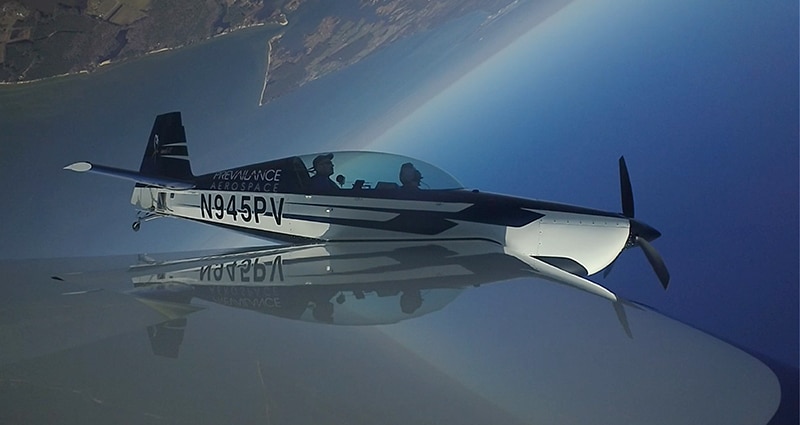What Stops Pilots from Training Like Elite Athletes?

Every pilot is cool, calm and confident when it’s VFR with the autopilot on and an airplane functioning flawlessly. What happens when one or more of these factors change; possibly inadvertent IFR or an unexpected mechanical malfunction?
Suddenly, a new version of that same pilot emerges. The transition from confident to chaotic happens quickly, and only through dedicated training to countering this physiological, startle reaction can any pilot overcome it.
Simulators and the Lack of Startle Response
Traditional pilot training does not adequately address unanticipated challenges to the point where it elicits the startle response. Specifically, simulators do not prepare pilots to face the body’s involuntary fight or flight adrenaline spike, and most importantly, how to work through process-driven emergency procedures while under duress. Without this stimulus and practice countering it, loss of control inflight will remain the number one cause of fatalities in aviation.
Upset prevention and recovery training (UPRT) is the only proven method to prepare pilots to successfully address complex scenarios in moments of high stress. UPRT takes place in a controlled, airborne, crawl-walk-run training methodology that starts with classroom-based academics and culminates with airborne maneuvers designed to teach students how to implement process-driven emergency procedures.
UPRT and SOF
This UPRT methodology is not unique to the aviation industry. It is the same method utilized by U.S. Navy SEALs and other high-performing special operations forces (SOF).
These units’ prowess and success on the battlefield is not attained through training for best-case scenarios, sunny weather and flawless equipment. It is achieved through a strong focus on the fundamentals, training to worst case scenarios, repetition and creating training scenarios that elicit startle responses in a controlled environment that successfully mitigates the risk of mishaps.
Our nation’s SOF warriors’ training replicates worst-case scenarios by incorporating the use of:
- Down man drills simulating a U.S. operator who is wounded or killed
- Simulated explosions/improvised explosive devices that create immediate disorientation
- Enemy jamming technologies that deny the use of communications equipment or GPS
- Opposition forces (OPFOR) role players who replicate enemy personnel
Experience upsets with a qualified CFI to best prepare as an elite professional.
UPRT and Elite Athletes
The National Football League (NFL) also provides ample case studies on the success that results from utilizing UPRT-like training methodologies that induce stress while training to worst-case scenarios. One of the contributing factors to the collective success of Bill Belichick and Tom Brady and their winning of six Super Bowls was their dominance in decision-making and execution in times of high stress.
This excellence was born from their dedication to practicing situational football. In training, they would replicate high-stress game conditions and specific scenarios and decisions they would face. As a result, in times of adversity, they were collectively calm, managing the clock and calling and executing the right plays at the right times.
Bob Bowman, coach to legendary Olympian Michael Phelps, famously let Michael swim a race at one of his first junior national events without goggles. “I could have taken the goggles to him, but I decided to keep them and see what he could do,” Bowman said. Phelps won the race without the goggles, and though Bowman didn’t know it at the time, it was to prove a masterstroke.
“I’ve always tried to find ways to give him adversity in either meets or practice and have him overcome it… the higher the level of pressure, the better Michael performs. As expectations rise, he becomes more relaxed… That’s what makes him the greatest.”
Training to a worst-case scenario in a controlled environment paid dividends for Phelps in Beijing in 2008, when he dove in for the 200-meter butterfly and his goggles filled with water. Having faced this problem and the resulting stress it induced in training, he swam blind to a new world record.
Sustaining the Ability to Overcome Stress and Startle
The common denominator among high performing individuals and organizations is the training methodology that prepares them to successfully navigate stress and startle while executing sound strategies for success. This training is not a one-time event. It requires an ongoing commitment to attain and maintain proficiency.
Pilots owe it to themselves and their passengers to adequately prepare for those scenarios when Murphy makes his inevitable appearance by taking annual on-aircraft UPRT. There is nothing at all stopping pilots from training like elite athletes.
Reference
Linden, J. (2012, August 12). Insight: The greatest Olympian and his coach. Reuters.

Prevailance Aerospace is a UPRT provider that has been working with corporate, government, and general aviation pilots to improve safety in the aviation industry. Prevailance Aerospace uses Extra 300 Series Aircraft for training and our pilots are experienced aviation professionals from various military and general aviation backgrounds. We know that successful aviation endeavors are accomplished through an uncompromising commitment to safety, impeccable professionalism, tremendous attention to detail, and constant improvement.
http://prevailanceaerospace.com
© 2024 Prevailance Aerospace. All Rights Reserved.
Next ArticleRelated Posts

Three Considerations That Set Pilots Up for Success
Constantly reviewing aviation accidents and incidents is challenging. As an instructor, it is not only the injuries and fatalities that make it hard, but the sheer magnitude of avoidable aspects of each incident. These safety reports prove that every Pilot in Command (PIC) is accountable for what transpires.

The Denominator Is not Common
When was the last time you identified the “goods” and “others” of any given event to improve efficiency and effectiveness? If it’s been a while, bring these words back into your daily routine. There is merit in shared experiences and the refinement of small nuances to create significant value. No organization or person in it is perfect.

